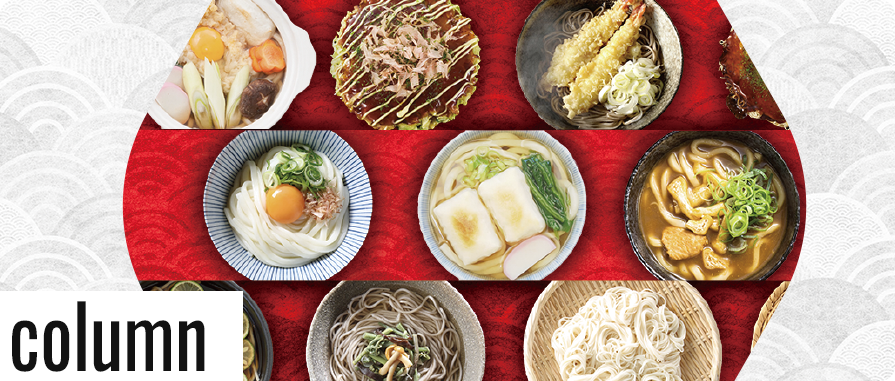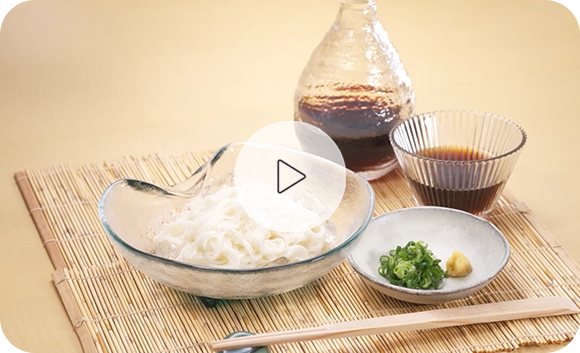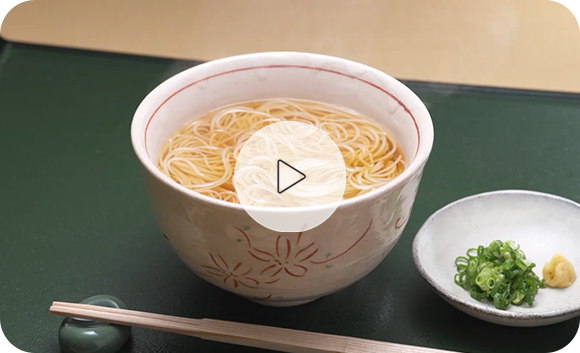
Special feature "Somen": easy to store, easy to cook, and very delicious Japanese dried noodles.
Discover the Taste of Japan | How to make Hand-stretched Somen
The traditional Hand-stretched technique, which dates back over 1200 years, is used to make thin "Somen" noodles that take about 36 hours to complete during the cold weather. The wheat flour is kneaded with a mixture of salt and water that is adjusted according to the temperature and humidity. To prevent drying and adhesion, the noodle is coated with edible vegetable oil and stretched even thinner. After being rolled in an 8-shape and left to mature for 4 hours, it is stretched to about 60 cm and left to rest overnight. The matured dough becomes more flexible and is slowly stretched and dried to the desired thickness of Somen. As it passes through the high temperature and humidity of the rainy season, the dough changes into a noodle that has a stronger texture and is less likely to expand when cooked.
Cooking Tips from Professors | Cold Somen
Cold somen is a typical way of eating, and it is a classic dish in Japan during the hot summer when appetite decreases. Once you take a bite, you can't stop reaching for another. It goes well with Tempura and so on when eaten with Mentsuyu. It's easy to enjoy at home, but in fact, there are many professional cooking tips that shine there, so don't miss it!
Cooking Tips from Professors | Hot Somen(Nyumen)
There is a way to eat Somen called "Nyumen", which is boiled in a warm soup that can be enjoyed all year round. The somen noodles used in Nyumen are very thin, but they remain chewy even after boiling, so you can eat them with a nice texture. Nyumen warms your body from the inside and makes you feel warm. You can easily cook and taste it at home, but in fact, there are many professional cooking tips that shine there, so don't miss it!




